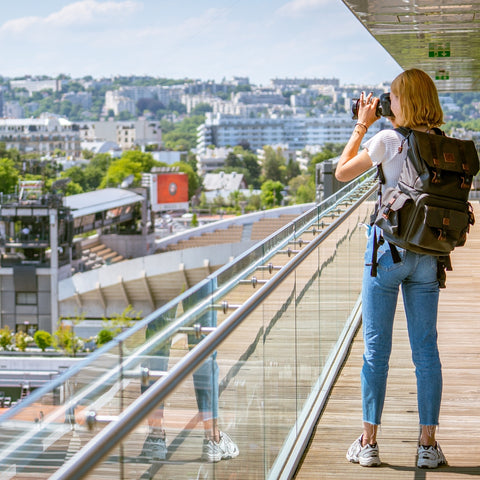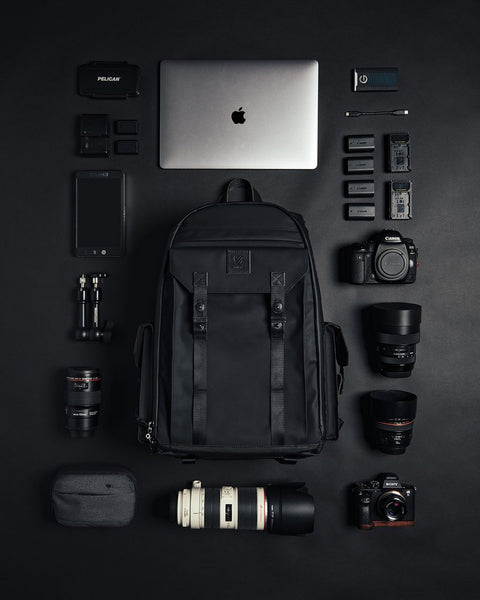
Photography and travel go hand in hand. We travel to explore and we take photos to capture those explorations and memories that we create in the course of travelling.
Travelling unlocks new destinations, new subjects and new content. It also exposes our equipment to risks. However, those risks can be easily mitigated to enable your equipment and your memories to get home in one piece.
Tip 1: Make Sure Your Camera Bag Is Carry-On Sized
This is the number one tip when flying with a camera bag. Make sure your bag fits within standard airline carry on dimensions. The last thing you want is for your bag and its precious contents to be taken from your person and thrown unceremoniously into the cargo hold!
Using American Airlines as an example (AA is the largest airline in the US), their carry-on allowance is:
- 1 personal item (such as a purse or small handbag)
- 1 carry-on bag that shouldn’t exceed 22 x 14 x 9 inches / 56 x 36 x 23 centimeters (including any handles and wheels)
Every airline is different, make sure you check with your airline before packing.
Tip 2: Only Pack What You Need
How much camera equipment are you taking?? If you’re only going for a short trip you don’t need to take your entire setup with you. Just take what you'll need. The less you take, the less opportunity there is for your precious equipment to get lost or damaged. That also means you can take a smaller bag, maybe even a cross body camera bag – smaller bags are much easier to stow on a plane and transport around with you.
Tip 3: Pack Carefully
Preparation is key. Your bag and its contents are going to be subjected to a lot of movement, even more so if you end up checking your camera bag in. Make sure your equipment is snug and well secured within the bag.
Use and move any internal dividers to ensure a snug fit. Wrap your equipment in tee shirts or other clothing items for extra padding. Use protective lens cases to secure your lenses, these come in multiple sizes to ensure a snug fit.
Tip 4: Choose A Well-Padded Camera Bag
Lightweight bags might sound attractive when flying, but when choosing a bag make sure you don’t sacrifice suitable protection for weight and space saving. You don’t know what you’re going to encounter on your journey, so it’s best to make sure your camera bag has a suitable level of padding – both internal padding so equipment doesn’t knock into and damage itself, and external padding to shield your camera gear from the drops and knocks that are part and parcel of travelling.
Tip 5: Use A Padlock On Your Camera Bag
Secure your bag with a small padlock that locks the zippers together. You don’t need an overly strong or expensive padlock here as providing a deterrent is the name of the game. Padlocking the zips of your camera bag means that opportunistic thieves won’t be able to easily access the contents of your bag and will likely move onto another victim.
Tip 6: Never Leave Your Camera Bag Unattended
Never, ever, leave your camera bag (or any bag for that matter) unattended when flying. Always keep it on your person. The reasons are obvious to seasoned travelers, if you put your camera bag down someone will pick it up and that someone might not be you. Opportunistic thieves operate in airports, train stations and other such areas so always be on high alert when travelling through these locations.

Tip 7: Keep Your Travel Documents Easily Accessible
The last thing you want is to have to rummage through your camera bag to find your passport or airline ticket. Rummaging through your carefully packed equipment undoes all that good preparation you’ve undertaken to gracefully pack your gear. Keep those documents accessible, but not so accessible that a pick pocket could nab them.
Tip 8: Make Sure Your Travel Insurance Covers Your Camera Equipment
If the worst does happen – your camera bag gets lost or stolen, or the bag and it’s contents are damaged somehow, insurance will compensate you for that loss or damage. Your standard travel insurance will cover you up to certain level, but for those with valuable equipment you may need to increase your level of cover or take out a specialist camera equipment travel insurance policy. Speak to your insurer or your travel agent for advice on this.
In need of a bag to transport your camera equipment around the world? Check out the range of Langly camera bags.


